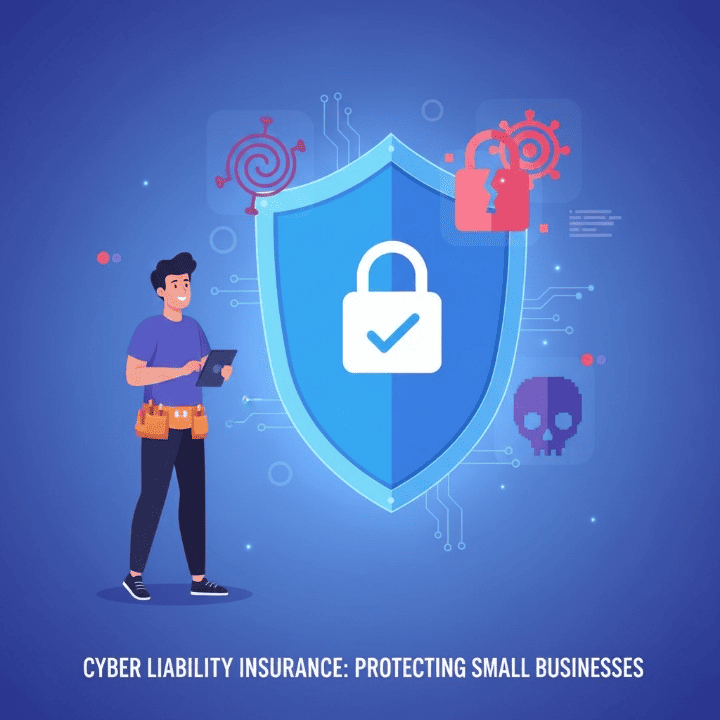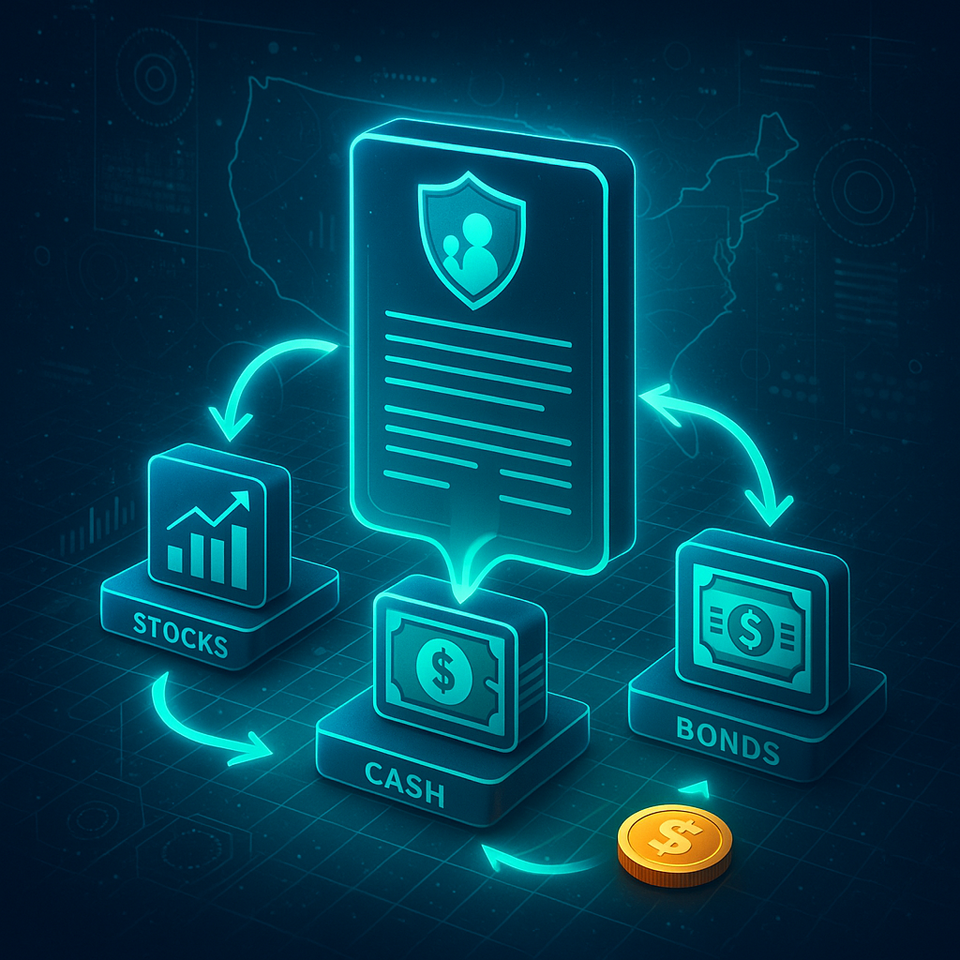
Introduction
In today’s interconnected digital landscape, small businesses confront escalating cyber security risks. The constant threat of a data breach or a ransomware attack is a stark reality. Many small business owners mistakenly believe their operations are too insignificant to attract cyber criminals. However, this assumption is dangerously flawed. Smaller businesses often become prime targets due to perceived vulnerabilities and fewer resources.
A single cyber incident can inflict severe financial and reputational damage. Recovering from such an event can be incredibly challenging. It might even force a business to close its doors permanently. Therefore, robust data breach protection is no longer a luxury. It is an absolute necessity for survival. This comprehensive guide will delve into Cyber Liability Insurance for Small Businesses. We will explore its critical role in mitigating digital dangers. Understanding this insurance is paramount for safeguarding your enterprise. It ensures business continuity in an increasingly volatile digital environment.
Understanding Cyber Security Risks for Small Businesses
Small businesses are not immune to cyber attacks; in fact, they are frequently targeted. Cyber criminals often see them as easier prey. They often have less sophisticated security systems. This makes them attractive to malicious actors. Recognizing these cyber security risks is the first step. It is crucial for effective protection.
Common Cyber Threats
Understanding the specific types of threats is important. This awareness helps businesses prepare. Here are some prevalent cyber dangers:
- Ransomware Attacks: Malicious software encrypts data. Attackers demand payment for decryption keys. This can paralyze operations completely.
- Phishing Scams: Deceptive emails trick employees. They reveal sensitive information. These can lead to credential compromise.
- Malware Infections: Harmful software infiltrates systems. It can steal data or disrupt services. This often happens unknowingly.
- Data Breaches: Unauthorized access to sensitive information. This includes customer details or financial records. Such breaches carry significant penalties.
- Business Email Compromise (BEC): Fraudulent emails impersonate executives. They request wire transfers or sensitive data. This results in direct financial losses.
Impact of a Cyber Attack
The consequences of a successful cyber attack can be severe. They extend far beyond immediate technical issues. Businesses face multifaceted challenges. These impacts can threaten their very existence.
- Financial Losses: Recovery costs are high. They include forensic investigations and legal fees. Regulatory fines can add significant burdens.
- Reputational Damage: Customer trust erodes quickly. News of a breach spreads rapidly. This can harm future business prospects.
- Operational Disruption: Systems may be offline for days or weeks. This halts normal business activities. Productivity suffers immensely.
- Legal and Regulatory Headaches: Lawsuits from affected parties are common. Compliance violations lead to hefty fines. Navigating these issues is complex.
- Loss of Intellectual Property: Confidential business information may be stolen. This can compromise competitive advantages. It impacts long-term growth.
What is Cyber Liability Insurance?
Cyber Liability Insurance for Small Businesses is a specialized policy. It protects against financial losses. These losses arise from cyber incidents. It covers costs associated with data breaches. It also addresses network security failures. This type of insurance goes beyond general liability policies. It specifically targets digital risks.
Definition and Purpose
This insurance provides a crucial safety net. It covers expenses related to cyber events. These events can disrupt your business. They can also expose sensitive customer data. Its primary purpose is to help businesses recover. It also covers third-party liabilities. This minimizes financial strain during a crisis. It is a vital component of any risk management strategy.
Key Coverage Areas
Cyber liability policies typically offer two main types of coverage. These protect different aspects of your business. Understanding both is essential for comprehensive protection. Both first-party and third-party coverages are important.
First-Party Coverage
First-party coverage addresses direct costs to your business. These costs occur due to a cyber incident. It helps you get back on track quickly. This coverage is for your direct losses.
- Business Interruption: Covers lost income. This happens when systems are down. It helps maintain financial stability during recovery.
- Data Recovery and Restoration: Pays for costs to restore lost data. This includes repairing damaged systems. It is crucial for getting operations running again.
- Ransomware Payments: Covers the costs of ransom. This includes negotiation fees. It helps decrypt systems and regain control.
- Crisis Management and Public Relations: Funds efforts to manage reputation. It includes legal advice and PR experts. This helps restore public trust.
- Forensic Investigation Costs: Pays for experts to investigate the breach. They determine the cause and scope. This is vital for understanding the incident.
Third-Party Coverage
Third-party coverage protects your business. It covers claims made against you. These claims arise from cyber incidents. It addresses liabilities to others. This ensures you are not financially crippled by lawsuits.
- Legal Defense Costs: Covers attorney fees. This includes court expenses. These arise from lawsuits by affected parties.
- Regulatory Fines and Penalties: Pays for fines imposed by regulators. This happens for non-compliance with data protection laws. Examples include GDPR or HIPAA violations.
- Notification Costs: Covers expenses for notifying affected individuals. This includes printing and postage for letters. It also covers call center services.
- Credit Monitoring Services: Provides identity protection services. This is for customers whose data was exposed. It helps mitigate further harm.
- Payment Card Industry (PCI) Fines: Covers fines from credit card companies. These occur due to a breach of cardholder data. It is crucial for businesses processing payments.
Why Small Businesses Need Cyber Liability Insurance
The misconception that small businesses are safe is dangerous. They are often attractive targets for cyber criminals. They typically have fewer resources for robust security. Investing in small business cyber insurance offers vital protection. It secures your digital assets. This is crucial for long-term viability.
The Myth of Being Too Small
Cyber attackers often exploit perceived weaknesses. Small businesses frequently operate with limited IT budgets. They may lack dedicated security teams. This makes them easier to breach. Statistics show a significant percentage of cyber attacks target small businesses. They are not too small to be noticed. They are often seen as stepping stones to larger entities. Or they are targeted for their own data.
Regulatory Compliance and Fines
Data protection laws are becoming stricter worldwide. Regulations like GDPR, CCPA, and HIPAA carry substantial penalties. A data breach can lead to massive fines. These fines can easily exceed a small business’s annual revenue. Cyber liability insurance for small businesses helps cover these costs. It ensures compliance post-breach.
Protecting Your Financial Stability
The financial impact of a cyber attack is profound. Costs include investigations, legal fees, and reputational damage. Without insurance, these expenses can be crippling. They can lead to bankruptcy. A comprehensive policy acts as a financial shield. It protects your hard-earned assets. This allows your business to recover effectively.
Maintaining Customer Trust
A data breach damages customer trust severely. Customers want to know their data is safe. Having digital asset protection through insurance demonstrates commitment. It shows you prioritize their security. The quick and professional handling of a breach, facilitated by insurance, can help restore confidence. This is vital for long-term customer relationships.
Choosing the Right Cyber Liability Policy
Selecting the appropriate small business cyber insurance policy requires careful consideration. Not all policies are created equal. Your business has unique risks. A tailored approach is essential. This ensures comprehensive ransomware coverage and general protection. It safeguards against diverse digital threats.
Assessing Your Business’s Risk Profile
Before purchasing insurance, understand your specific vulnerabilities. Evaluate the types of data your business handles. Consider industry-specific compliance requirements. This assessment helps determine your needs. It guides you toward suitable coverage options.
- Type of Data Handled: Do you process Personally Identifiable Information (PII)? What about financial data or health records? Sensitive data increases risk.
- Industry-Specific Regulations: Are you in healthcare or finance? These sectors have strict data protection laws. Your policy must address these.
- Existing Security Measures: What security protocols are already in place? Stronger defenses might lead to better rates. Be honest about your current posture.
- Number of Employees: More employees can mean a larger attack surface. Training levels also impact risk.
Key Factors to Consider When Comparing Policies
When reviewing different insurance quotes, focus on several critical elements. These factors will influence the effectiveness of your protection. Do not just look at the premium. Consider the full scope of coverage.
- Coverage Limits and Deductibles: Understand the maximum payout. Also, know your out-of-pocket costs. Ensure limits align with potential loss.
- Specific Exclusions: Read the fine print carefully. What events or circumstances are not covered? Avoid unpleasant surprises later.
- Incident Response Services Included: Many policies offer expert assistance. This includes legal, forensic, and PR support. These services are invaluable during a crisis.
- Reputation of the Insurer: Choose an insurer with a strong track record. Look for stability and good customer service. Their expertise matters during a claim.
- Policy Customization Options: Can you tailor the policy to your needs? Look for flexibility in coverage. This ensures it fits your unique business.
Understanding Policy Costs
The premium for Cyber Liability Insurance for Small Businesses varies. Several factors influence the final price. Knowing these helps you budget effectively. It also allows for informed decisions.
- Industry Sector: Some industries are higher risk. Healthcare and finance typically pay more. Manufacturing or retail might have different rates.
- Annual Revenue: Larger revenues often mean higher potential losses. This can increase premiums.
- Existing Security Posture: Businesses with robust cybersecurity measures may get discounts. Show proof of strong defenses.
- Claims History: A history of previous cyber incidents can raise premiums. It indicates higher future risk.
- Desired Coverage Limits: Higher coverage limits naturally lead to higher premiums. Balance protection with affordability.
Beyond Insurance: Essential Cyber Security Practices
Cyber Liability Insurance for Small Businesses is a vital safety net. However, it is not a substitute for proactive security measures. Insurance helps when an incident occurs. Strong cybersecurity practices aim to prevent incidents entirely. A layered approach offers the best defense. Combine insurance with robust preventative steps. This secures your digital asset protection comprehensively. It also strengthens your overall business continuity plan.
Implementing Strong Security Measures
Proactive security is your first line of defense. These measures significantly reduce your risk exposure. They are fundamental to protecting your business.
- Multi-Factor Authentication (MFA): Require MFA for all accounts. It adds an extra layer of security. This prevents unauthorized access even with stolen passwords.
- Regular Data Backups: Implement a consistent backup strategy. Store backups securely and off-site. This ensures data recovery after an attack or system failure.
- Employee Training: Educate staff on common cyber threats. Teach them about phishing, malware, and social engineering. A well-informed team is a strong defense.
- Robust Firewalls and Antivirus Software: Install and regularly update these tools. They protect against malicious software and unauthorized access.
- Strong Password Policies: Enforce complex, unique passwords. Encourage regular password changes. Password managers can assist employees.
- Network Segmentation: Divide your network into isolated segments. This limits the spread of malware during an attack.
- Endpoint Detection and Response (EDR): Implement EDR solutions. They monitor and respond to threats on devices. This provides real-time protection.
Developing an Incident Response Plan
Despite best efforts, a breach can still occur. A well-defined incident response plan is critical. It guides your actions during a crisis. This minimizes damage and accelerates recovery. This plan should be practiced regularly.
- Define Roles and Responsibilities: Clearly assign tasks to specific team members. Everyone should know their part in a breach scenario.
- Identify Key Contacts: Keep an updated list of contacts. This includes legal counsel, IT forensics, and your insurance provider.
- Communication Strategy: Plan how you will communicate. This includes informing customers, employees, and regulatory bodies. Transparency builds trust.
- Containment and Eradication Steps: Outline immediate actions to stop the breach. This involves isolating affected systems. Then, remove the threat.
- Recovery Procedures: Detail steps to restore systems and data. This ensures a quick return to normal operations.
- Post-Incident Analysis: After recovery, review the incident. Learn from it to improve future defenses.
Continuous Monitoring and Updates
The cyber threat landscape constantly evolves. Your security measures must evolve too. Continuous monitoring and regular updates are non-negotiable. This proactive stance keeps your defenses strong.
- Software and System Updates: Always apply patches and updates promptly. Outdated software is a common vulnerability.
- Regular Security Audits: Conduct periodic security assessments. Identify weaknesses before attackers can exploit them.
- Threat Intelligence Monitoring: Stay informed about new threats. Subscribe to cybersecurity news and alerts.
- Review and Refine Policies: Regularly review your security policies. Adjust them based on new threats and technologies.
Conclusion
In conclusion, the digital age presents both immense opportunities and significant risks for small businesses. The pervasive nature of cyber threats, ranging from ransomware coverage demands to insidious data breaches, necessitates a robust defense strategy. While proactive cybersecurity measures form the foundational layer of protection, Cyber Liability Insurance for Small Businesses serves as an indispensable financial safeguard. It mitigates the potentially catastrophic costs associated with cyber incidents, ensuring that your business can navigate and recover from unforeseen digital challenges.
Investing in comprehensive small business cyber insurance is not merely an expenditure; it is a strategic investment in business continuity and long-term resilience. By combining a well-chosen policy with diligent security practices, small businesses can confidently face the future. This dual approach protects financial stability, preserves customer trust, and maintains operational integrity. Take the proactive step today to secure your digital future. Protect your valuable digital asset protection with a thoughtful blend of prevention and insurance. This ensures your business remains strong in an evolving digital world.



